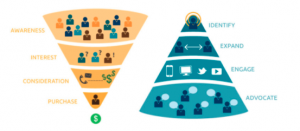If you’re an email marketer who is just beginning to implement emojis in your messages, you are not alone. In fact, the use of emojis in marketing is up 557 percent from last year; 700 million marketing messages with emojis were sent last year, compared to just 145 million the year before.
And these marketers are onto something—56 percent of brands report experiencing an increase in open rates when emojis are included in email subject lines. While boosting open rates is the most significant benefit of utilizing these little icons, emojis can also help brands express their personality, seem more modern and approachable, save valuable space in subject lines, and stand out in what are becoming increasingly crowded inboxes.
If you’re one of the marketers who is new to the emoji game, or if you have yet to begin experimenting, read on for some helpful best practices to ensure the emojis in your emails are enhancing your campaigns.
Know your audience
First, it’s essential to know which emojis — if any — will resonate most with your various audiences. Some recipients may interact more with messages containing emojis, while some may prefer emails without them, so use data on customer preferences to segment campaigns accordingly.
For instance, age can be a great starting point for segmentation. Test out emojis with younger audiences who are more apt to be familiar with the language, while scaling back on the images for older demographics. If you don’t already have age information about your contacts at your fingertips, you can begin collecting date of birth by adding it to email subscription forms.
Routinely test to gauge effectiveness
A/B split testing is crucial for the success of any campaign, but it becomes even more imperative when you’re introducing a new element like emojis. In this case, A/B split testing can alert email marketers to how well emojis are being received by contacts
Though emojis are becoming more widely accepted by ISPs, there is still a slight chance that their presence could trigger spam filters. Additionally, some platforms may not yet render emojis correctly, leaving recipients with either blank spaces or square boxes where the icon should be.
Test emoji-containing emails on common email platforms, such as Gmail and Outlook, to ensure that your contacts are receiving the emails and that they are being displayed correctly when they do.
Use emojis wisely
Emojis are fun to use for both marketers and recipients, but their use in subject lines can quickly become overwhelming if there are too many, too often. A general rule of thumb is that two emojis is the maximum for subject lines; usually it is best to default to one.
Additionally, never replace words with emojis. In case the image doesn’t render properly, you don’t want your recipients to be left with an incomplete statement or call-to-action. So for instance, if you send out a promotion for a sale on jeans, it should appear as: “Jeans you’ll love <3,” not “Jeans you’ll <3.”
By implementing the tips above, your campaigns will be set to effectively utilize the hottest craze in email: the emoji.
Digital & Social Articles on Business 2 Community(80)
Report Post


